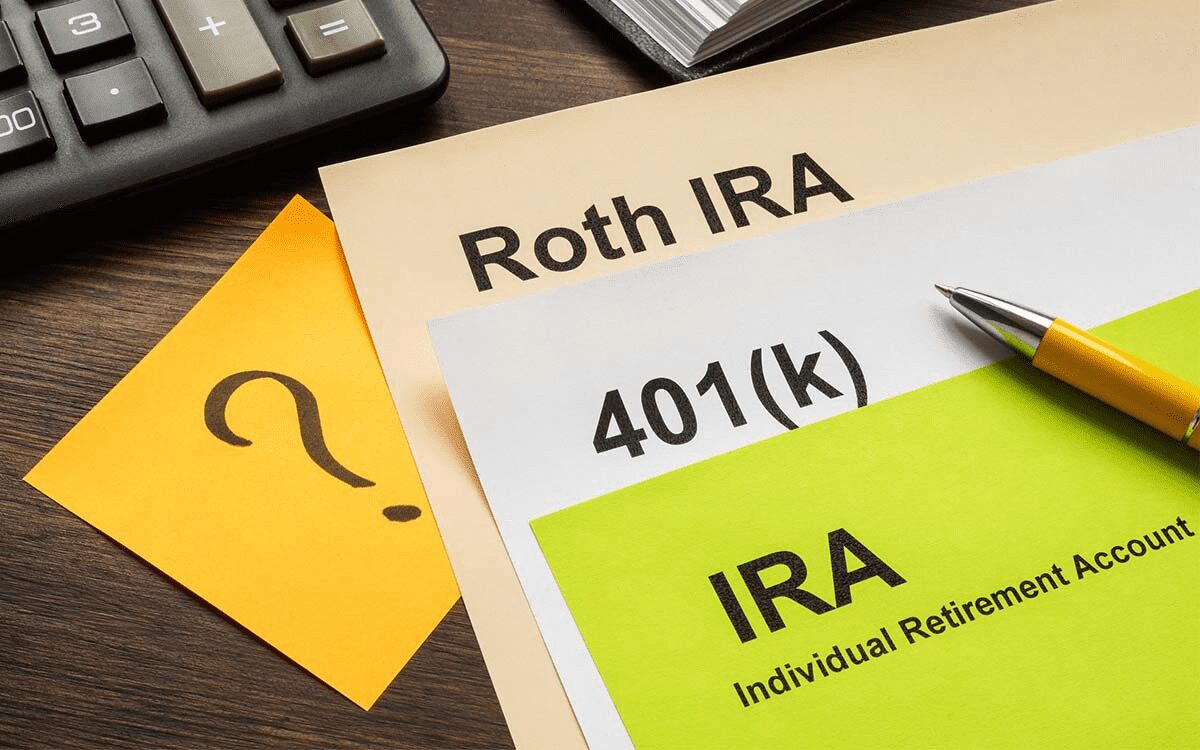A Roth 401k brings many benefits of a traditional employer-sponsored 401(k) retirement savings vehicle. But with a traditional 401 k, you save for retirement with pre-tax dollars and write off your contributions from your taxes. With a Roth 401(k), you contribute after-tax dollars. That means you pay taxes now on your contributions but not when you take withdrawals from your account in retirement. Not all employees have access to Roth 401(k) plans, though, but those who do may be well served to enroll in one.
What Is a Roth 401(k) and How Does It Work?
With a Roth 401(k), you take after-tax dollars and put them into a retirement savings account. Your choices as to which retirement account you can invest in will depend on what your employer offers. You may opt for a target-date fund, or you may build your own mix of stocks, bonds, mutual funds, and money market holdings.
You pay regular income taxes yearly on the money you choose to contribute to your Roth 401(k). Then, when you retire, you can start taking distributions from the account. You won’t owe any tax payments on these withdrawals because you already paid taxes on your deposits. As you might expect, this could be helpful when you reach retirement age.
Not just anyone can open a Roth 401(k). That’s because Roth 401(k)s are employer-sponsored retirement plans. You either have access to one, or you don’t. The best way to find out if you have access to one at your job is to ask your company’s HR department.

Roth 401(k) Rules
It’s common for people to split their employer-sponsored savings between a traditional 401(k) and a Roth 401(k). Taking tax-free distributions in retirement is the most significant benefit of the Roth 401(k). To take advantage of this benefit without paying an early withdrawal penalty, though, you must be at least 59.5 years old when you begin taking distributions from your account. In addition, you must have had the Roth 401(k) for at least five years. Roth 401(k) plans also come with Required Minimum Distribution (RMD) rules. Once you hit age 70.5, you must, by law, begin taking distributions from your Roth 401(k).

Roth 401(k) vs. Traditional 401 k
These competing retirement accounts are similar, but they’re meant for different individuals. If you want tax savings now, go for the traditional 401 k. Those looking for tax savings in retirement should opt for the Roth 401(k).
As mentioned above, you don’t necessarily have to choose between a traditional 401 k and a Roth 401(k). You can split your retirement savings between the two. If you want to diversify your tax risk in retirement (since you can’t be sure exactly what your retirement income will be or how the tax law will have changed by then), using both accounts may also be beneficial.

Roth 401(k) vs. Roth IRA
Some workers save with a regular 401(k) through their employer and then open a Roth IRA separately. They do this to diversify their tax burden in retirement. Now that Roth 401(k)s are becoming more widely available to employees, more workers are wondering how to choose between a Roth 401(k) and a Roth IRA.
With the Roth 401(k), there is no income limit, so anyone can contribute, no matter how rich. Roth IRAs, on the other hand, are designed with lower- and middle-income savers in mind. This year, the adjusted gross income (AGI) phase-out range for a married couple filing jointly is $204,00 to $214,000. For those filing single, the range is $129,000 to $144,000.
Why a range? If your income is below the range, you can contribute $6,000 to a Roth IRA. But if it’s within the range, you are subject to contribution phase-out rules, meaning you won’t be able to contribute the total $6,000. If your income is above the top of the phase-out range, the Internal Revenue Service (IRS) rules prohibit you from contributing to a Roth IRA. So, if your income excludes you from saving in a Roth IRA, but you still want to diversify your retirement tax risk, you can instead opt for a Roth 401(k) if your employer has this choice.

What is the Downside of a Roth 401 k?
One of the main downsides of having a Roth 401 k is that it doesn’t offer access to funds until the account holder reaches retirement age. Although not typically an issue for those near or already in retirement, it can be difficult for younger adults who don’t have many available options to tap into those funds. Furthermore, Roth 401 ks are subject to the same regulatory requirements as other Roth accounts, including (as mentioned above) a five-year holding period and potential taxes when withdrawn early or under certain conditions. While Roth 401 ks offer several tax benefits, it’s important to weigh any potential downsides before investing in one.
Is a Traditional IRA Better?
A traditional IRA is a retirement account that many individuals find beneficial in terms of long-term savings. Contributions made to traditional IRAs are typically deductible from an individual’s current income tax, and any qualified distributions from traditional IRAs can generally be excluded from taxable income. As such, traditional IRAs offer tax benefits for individuals looking to increase their nest egg without having to pay additional taxes on the money. While traditional IRAs are not always the best choice for everyone’s situation, they can provide potential financial advantages compared to other types of retirement accounts.

What are the contribution limits to a roth 401 k in 2023?
Can I Max Out a Roth 401 k and Roth IRA in the Same Year?
Investing in both a Roth 401k and Roth IRA can be an attractive option to help build retirement savings due to their tax-free nature. Is it possible to max out both accounts in the same year? While you may have the financial means to contribute up to each account’s yearly limit, income requirements may prevent you from doing so.
Contributions to a Roth 401k are subject to income guidelines, with eligibility decreasing as your salary increases. To qualify for deductible Roth IRA contributions, there are also income limits that may disqualify those who exceed them. Furthermore, annual Roth IRA contribution limits apply regardless of income level or filing status. Therefore, planning and researching your current income levels and eligibility limitations are essential before making Roth 401k and Roth IRA contributions for the year.
What Are the Contributions Limits for 2023?
In 2023, the contribution limits for employees who participate in 401 k), 403(b), most 457 plans, and the federal government’s Thrift Savings Plan has increased to $22,500. This is up from $20,500.
Remember, with a Roth 401 k retirement plan, workers can make contributions to employer-match 401 ks on an after-tax basis. This means the government takes tax out of their payments before they’re put into their account. This is also called after-tax contributions. In contrast, pre-tax contributions are dollars that have not yet been taxed. Suppose you’re making an effort to better your retirement plan. In that case, it’s helpful to make sure you understand your employer’s plan, what the contribution limit is, and what other sort of tax benefit there might be for you to contribute additional funds to your Roth 401 k or other assets.
Bottom Line
If you like the sound of a Roth 401(k), but your company doesn’t provide access to one, consider taking your case to HR and asking for a Roth 401 k. The more time your savings has to grow in a Roth 401(k), the greater the benefits to you. That’s because you’ll see more tax-free earnings as your savings compound with time.
Tips to Get Ready for Retirement
- Figure out how much you’ll need to save to retire comfortably. An easy way to get ahead in saving for retirement is by taking advantage of employer 401(k) matching.
- Work with a financial advisor. If you’re ready to find an advisor who can help you achieve your financial goals, read our 7 Questions You Should Ask a Financial Advisor and 3 Things To Think About When Choosing A Wealth Management Firm.
- Join Planning Made Simple and work with a coach who can not only help to answer your retirement questions but guide you along your retirement journey. As a member of the Planning Made Simple Community, you also will have access to our newsletter and articles, as well as be able to interact with fellow community members who can help to answer your questions or provide suggestions. Join today.